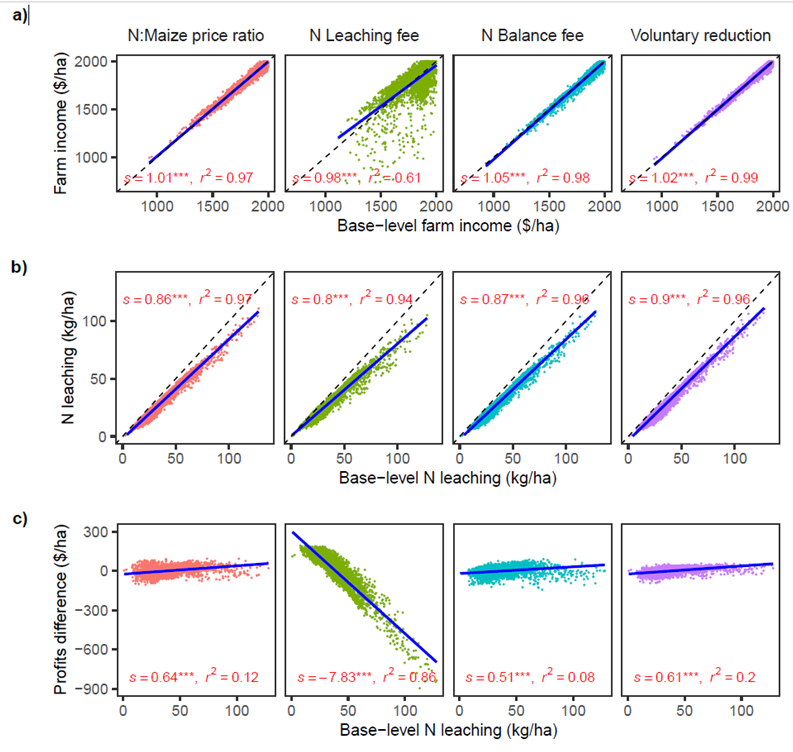New paper – Using APSIM to evaluate environmental policies and answer “big-picture” questions
The recently published article is an example of how APSIM can be used to answer questions that include the interaction of agronomy, environmental sciences, economics, and policy making. After developing a calibrated and validated dataset of millions of simulated responses of corn to nitrogen (N) fertilizer addition, this article evaluated how different governmental policies could incentivize farmers to lower their nitrogen rate in Illinois, a state with more than 8.6 million ha of corn and soybean rotations in the US Midwest. They compared four different policy scenarios: (1) higher N prices, (2) N leaching fee, (3) N balance fee, and (4) voluntary reduction of N use by farmers, each implemented under a range of sub-levels (low to high severity). The article provides an economic analysis of the policy scenarios, considering how yield and profits would change and proposing mechanisms to compensate farmers for the profits loss. When aggregated across all fields, the policies generally showed that a 20% reduction could be achieved in Illinois, with a control cost to the society of 147 million U$S/year. That would translate into a reduction in negative externalities related to N fertilizer use of 524 million U$S/year (a return on investment of 260%). However, each policy has different economic and political costs that would need to be considered, as well as the feasibility of implementation. The article can be found here.

Figure showing the field-level effects of the different policies compared to the business as usual scenario (base-level). a) Farm income after compensation relative to base-level income. b) N leaching relative to the base-level N leaching (income effect). c) Profits difference (farm profits after policy – farm profits before policy) relative to the base-level N leaching (internalization effect)
